Algorithms
Communication 1
As of yesterday, only 20 people have subscribed to the mailing list
Please subscribe to the mailing list as soon as possible
How: send me an e-mail (silvio.peroni@unibo.it) using your UniBo email address, and I'll add you directly to the list
Then, you can receive / send emails from / to compthink1819@googlegroups.com
Communication 2
We have a new Telegram group for instant-messaging!
Telegram is a cloud-based mobile and desktop messaging app with a focus on security and speed, it is an open source software, and can be used in any device (it has been developed for mobile and desktop devices)
The invitation link to the group will be sent on the mailing list – thus, please, subscribe to the mailing list first
Communication 3
Exam sessions dates (informal):
25 January 2019
15 March 2019
22 May 2019
21 June 2019
17 July 2019
20 September 2019
For each date:
written examination: 10-12
project oral colloquium: 13-16
Any question about the previous lecture?
Historic hero: Ada Lovelace

English mathematicians
English translator of the first article about Babbage's Analytical Engine, written by Luigi Federico Menabrea in French
She enriched the English translation of the article with several annotations
Original article: ~8000 words
Notes by Ada: additional ~19000 words
Ada's heritage
First mechanical computer programmer: in the article notes, there is a description of how to use the Analytical Engine to calculate the Bernoulli numbers
The operating mechanism can even be thrown into action independently of any object to operate upon (although of course no result could then be developed). Again, it might act upon other things besides number, were objects found whose mutual fundamental relations could be expressed by those of the abstract science of operations, and which should be also susceptible of adaptations to the action of the operating notation and mechanism of the engine. Supposing, for instance, that the fundamental relations of pitched sounds in the science of harmony and of musical composition were susceptible of such expression and adaptations, the engine might compose elaborate and scientific pieces of music of any degree of complexity or extent.
Science of Operations = Computer Science
Common features
What do recipes and instructions for assembling objects have in common?

Shared abstract notion: step-by-step procedure for producing something starting from some initial material we have = algorithm
Algorithm
The word algorithm
is a combination of the Latin word algorismus (that is the Latinization of the name Al-Khwarizmi, who was a great mathematician from Persia in the 8th century) and the Greek word arithmos, meaning number
Each algorithm is written in a specific language which is functional to communicate its instruction to a computer
Computer programmer: anyone that creates algorithms that can be interpreted by any computer
Pseudocode
A pseudocode in an informal language that could be interpreted easily by any computer - even if, usually, it is pretty close to a programming language
It is used by Computer Scientists for sketching an algorithm before to implement it in a particular programming language
Checking if an algorithm can be interpretable by a computer: provide a colleague with the pseudocode of the algorithm and ask her to execute it using a particular input, writing down all the passages of the execution on a piece of paper
Flowchart
In this lecture, though, we use a particular graphical alternative to a common pseudocode which is good for being understandable by humans: a flowchart
Our first algorithm: taking in input three different strings, i.e. two words and a bibliographic entry of a published paper, return 2 if both the words are contained in the bibliographic entry, 1 if at least one of the words is contained in the bibliographic entry, and 0 otherwise
E.g.: input "Berners-Lee", "web" and "Tim Berners-Lee: Designing the web for an open society. WWW 2011: 3-4"; output 2.
Flowchart: flowline

The arrow is used to define the order in which the operations are executed
The flow indicated by the arrows begin in the starting terminal and ends in the ending terminal
Flowchart: terminal

It indicates the beginning and ending of an algorithm
It contains a text (usually, either "start" or "end") so as to disambiguate which role has the particular terminal widget in the context of the algorithm
Flowchart: input / output
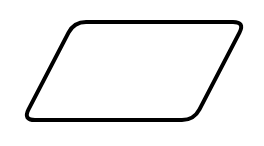
It allows one to specify possible input / output material which is used / returned by the algorithm usually at the beginning or end of its execution
Flowchart: decision

It depicts a conditional operation, where a condition is checked and, depending on the value of some of the variables involved in the algorithm, the execution continues in a particular branch instead of another
Usually, the this operation creates two possible alternative branches: one to be followed whether the condition considered is true, and the other in case the condition is false
Partial algorithm
Take in input only two strings, i.e. an input word and a bibliographic entry, and return 1 if the the input word is contained in the bibliographic entry, otherwise return 0
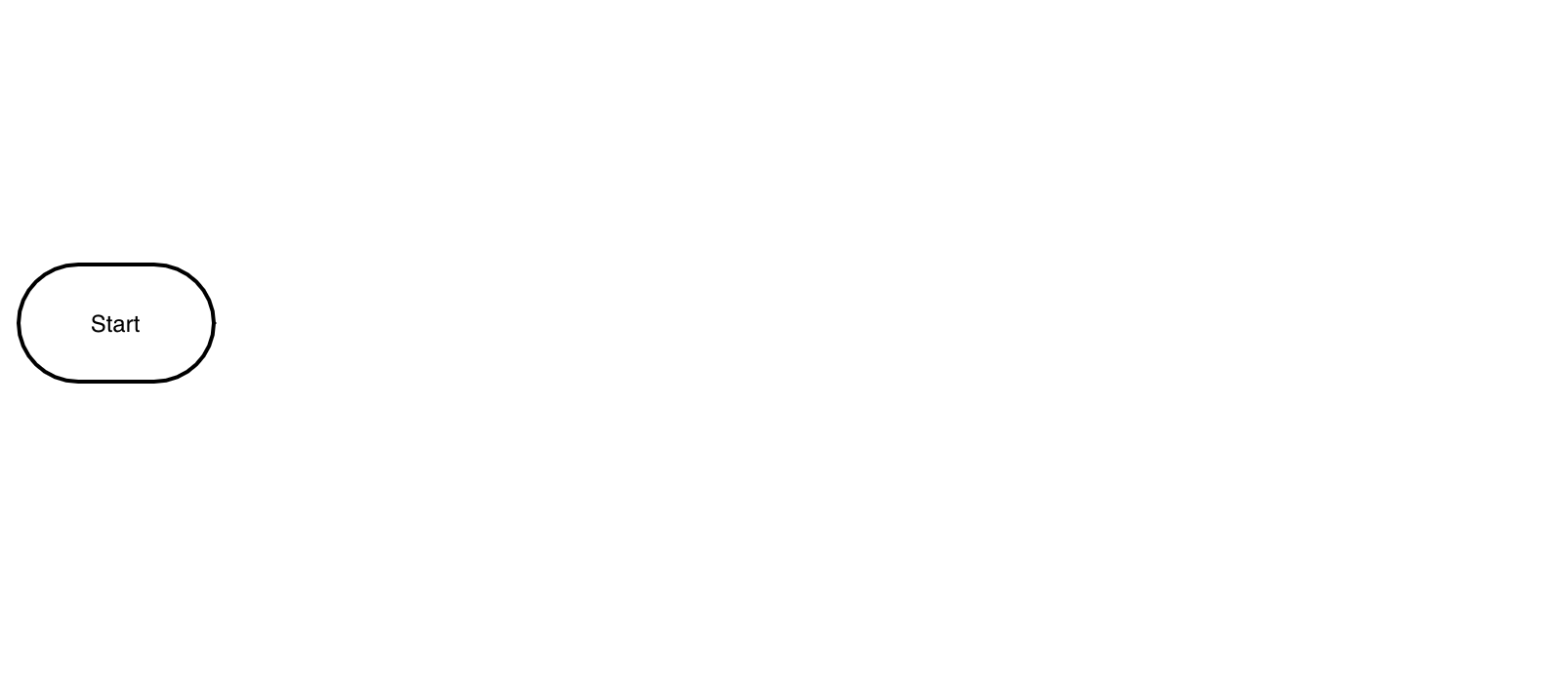
Partial algorithm
Take in input only two strings, i.e. an input word and a bibliographic entry, and return 1 if the the input word is contained in the bibliographic entry, otherwise return 0

Partial algorithm
Take in input only two strings, i.e. an input word and a bibliographic entry, and return 1 if the the input word is contained in the bibliographic entry, otherwise return 0

Partial algorithm
Take in input only two strings, i.e. an input word and a bibliographic entry, and return 1 if the the input word is contained in the bibliographic entry, otherwise return 0
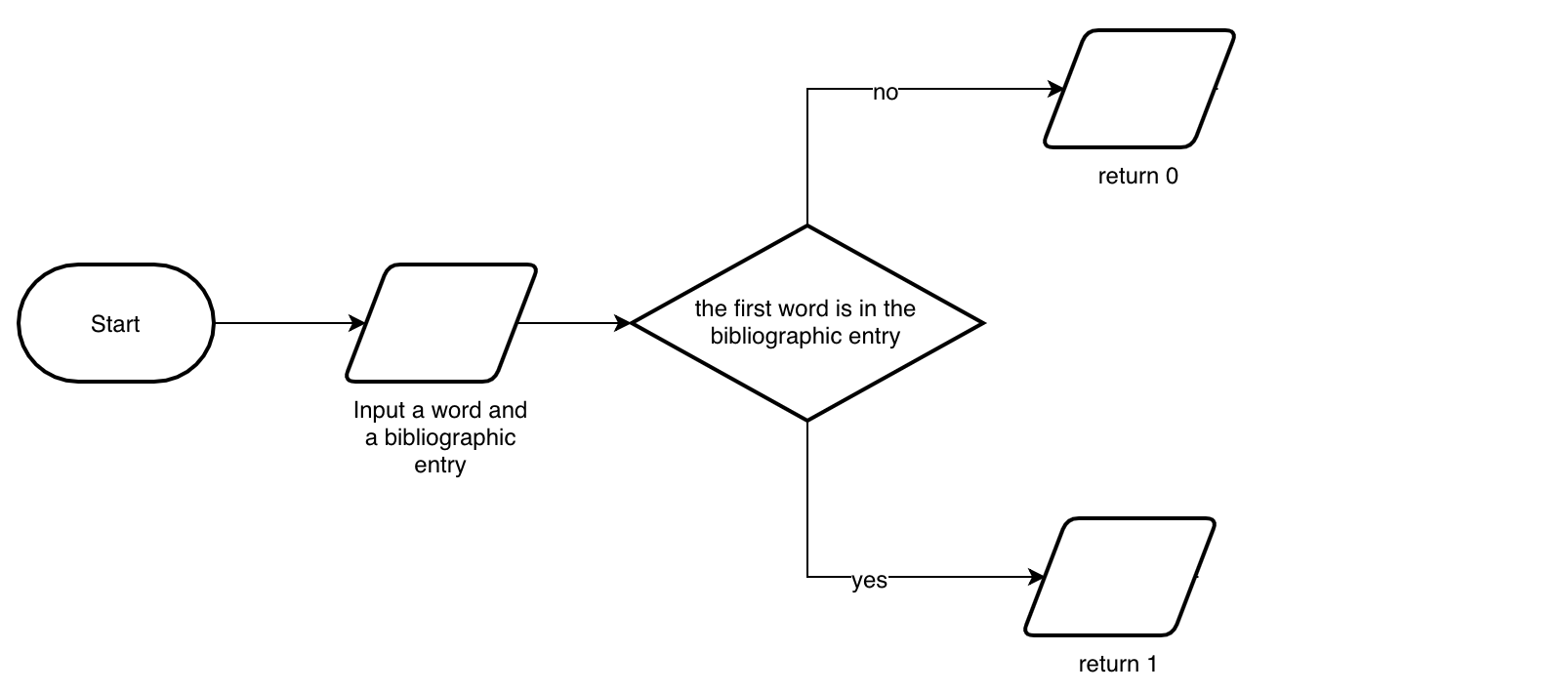
Partial algorithm
Take in input only two strings, i.e. an input word and a bibliographic entry, and return 1 if the the input word is contained in the bibliographic entry, otherwise return 0
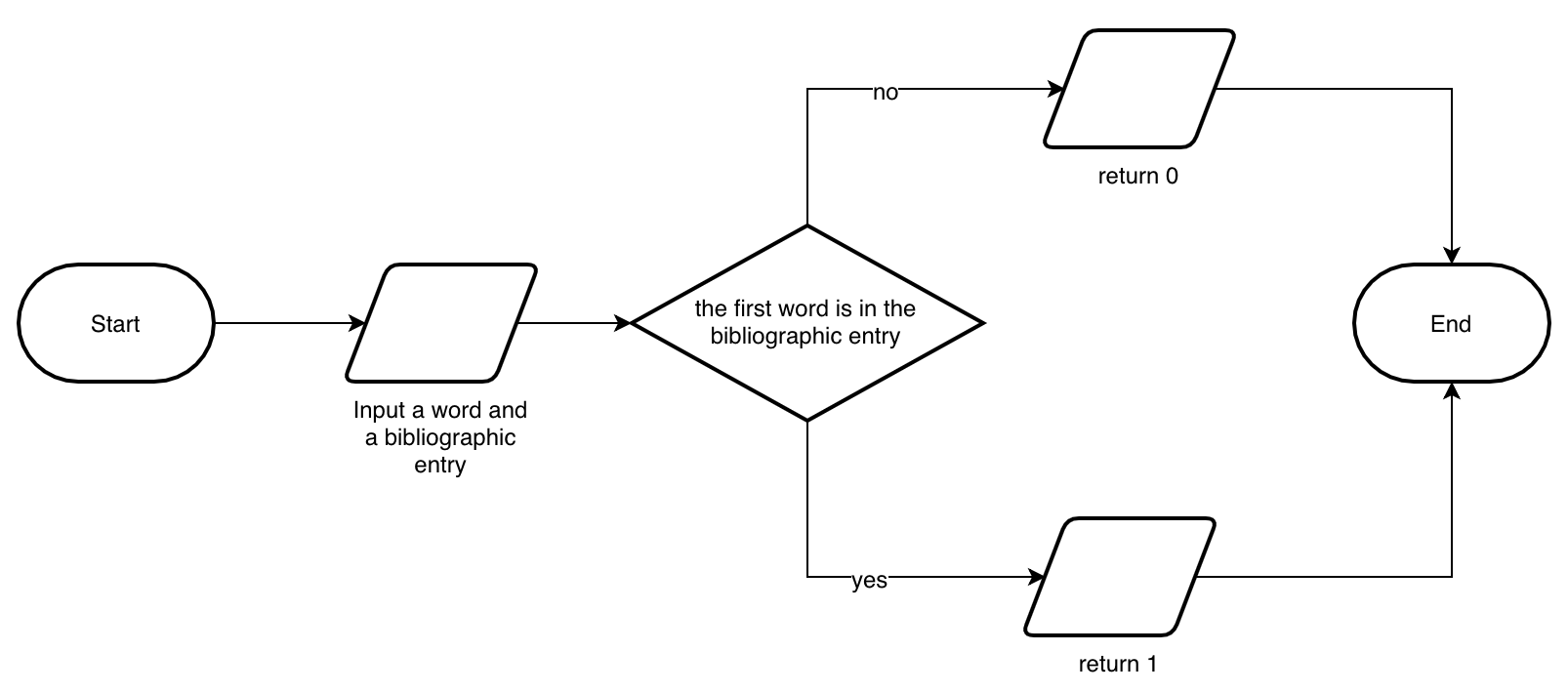
Flowchart: process

It is used for expressing (usually one) instruction or operation, that is executed and that can change the current state of some variables used in the algorithm
The text it includes depicts the instruction to execute
Final algorithm: reprise
Take in input three different strings, i.e. two words and a bibliographic entry of a published paper, and return 2 if both the words are contained in the bibliographic entry, 1 if at least one of the words is contained in the bibliographic entry, and 0 otherwise
Final algorithm: flowchart

Final algorithm: flowchart
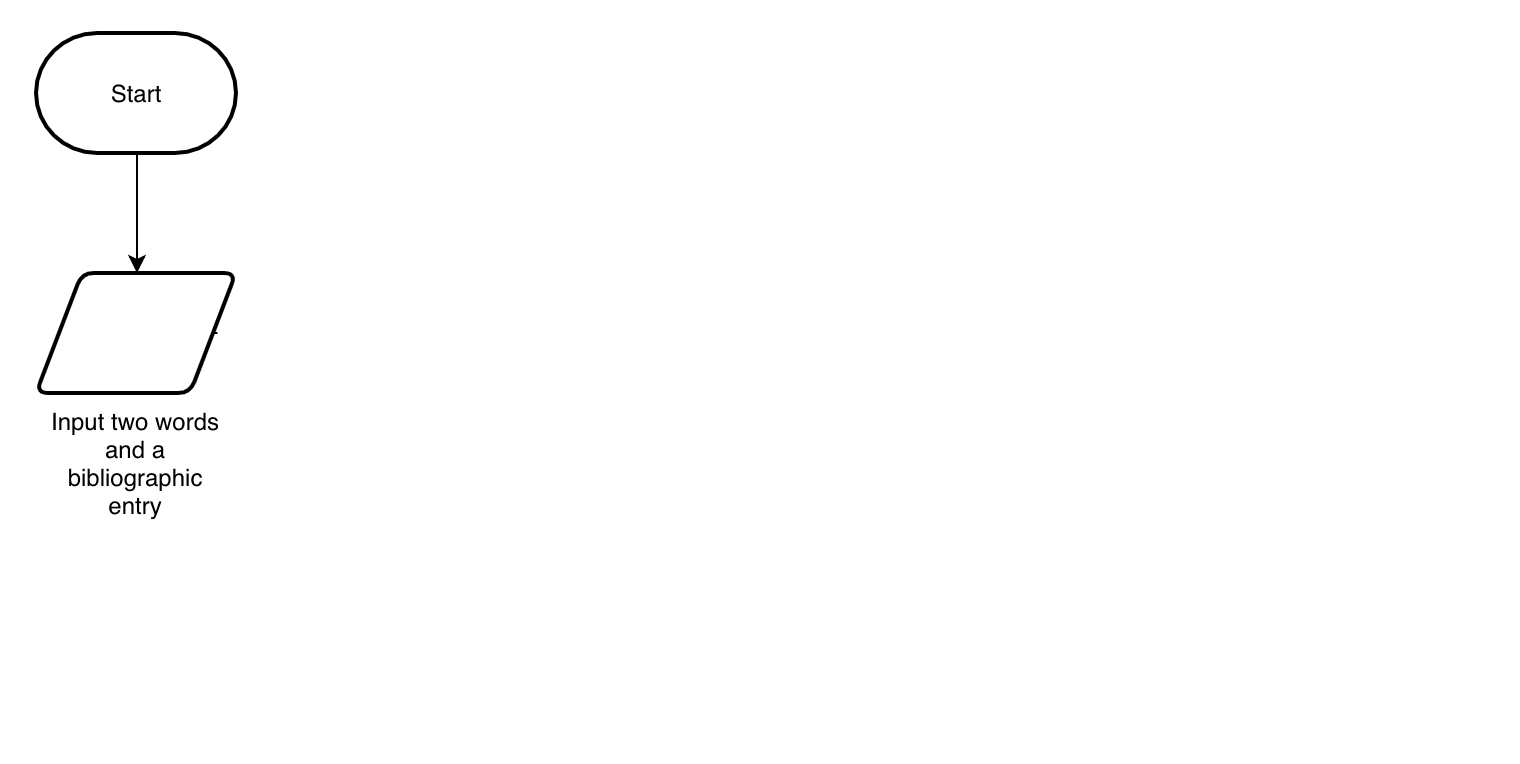
Final algorithm: flowchart

Final algorithm: flowchart
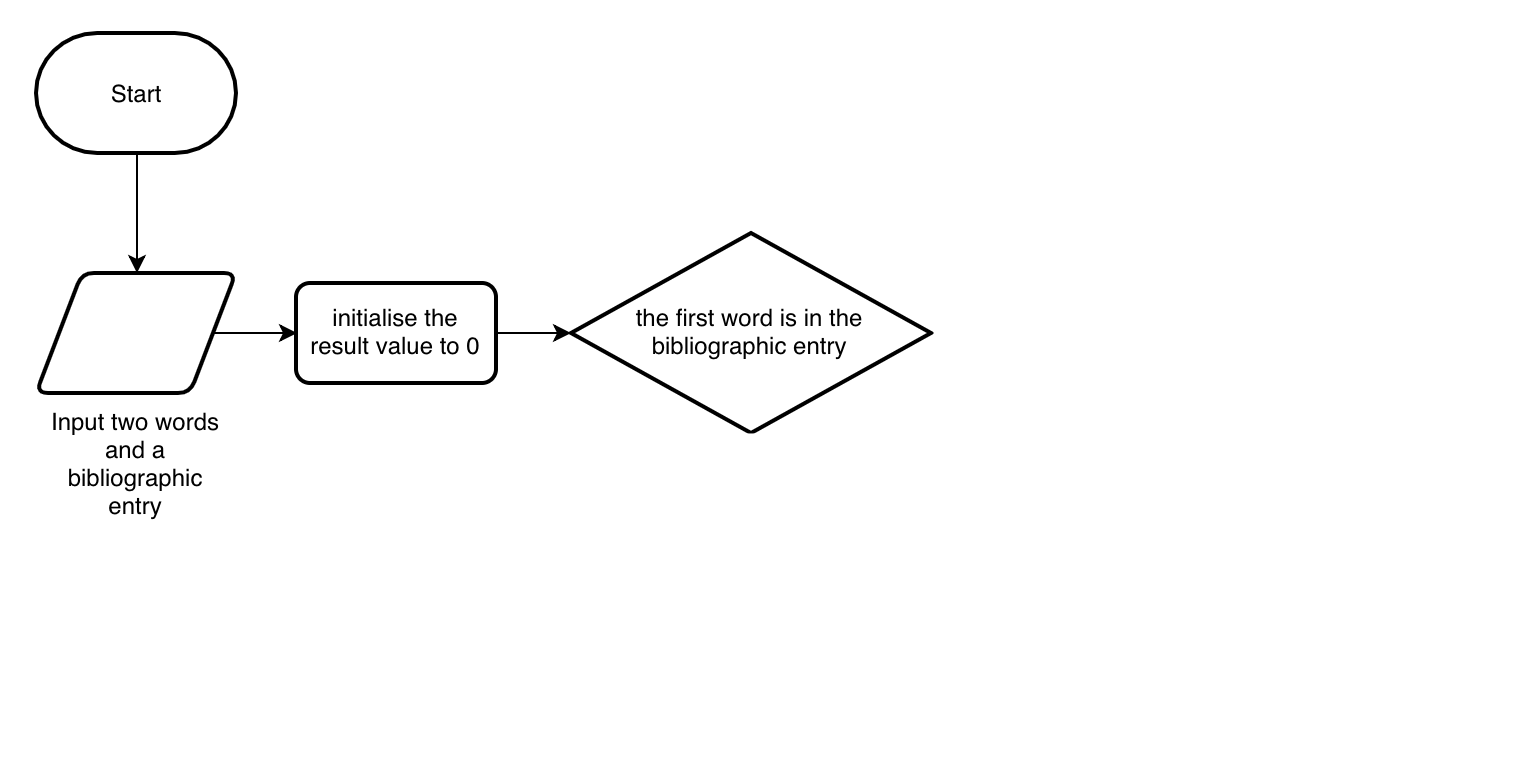
Final algorithm: flowchart

Final algorithm: flowchart

Final algorithm: flowchart
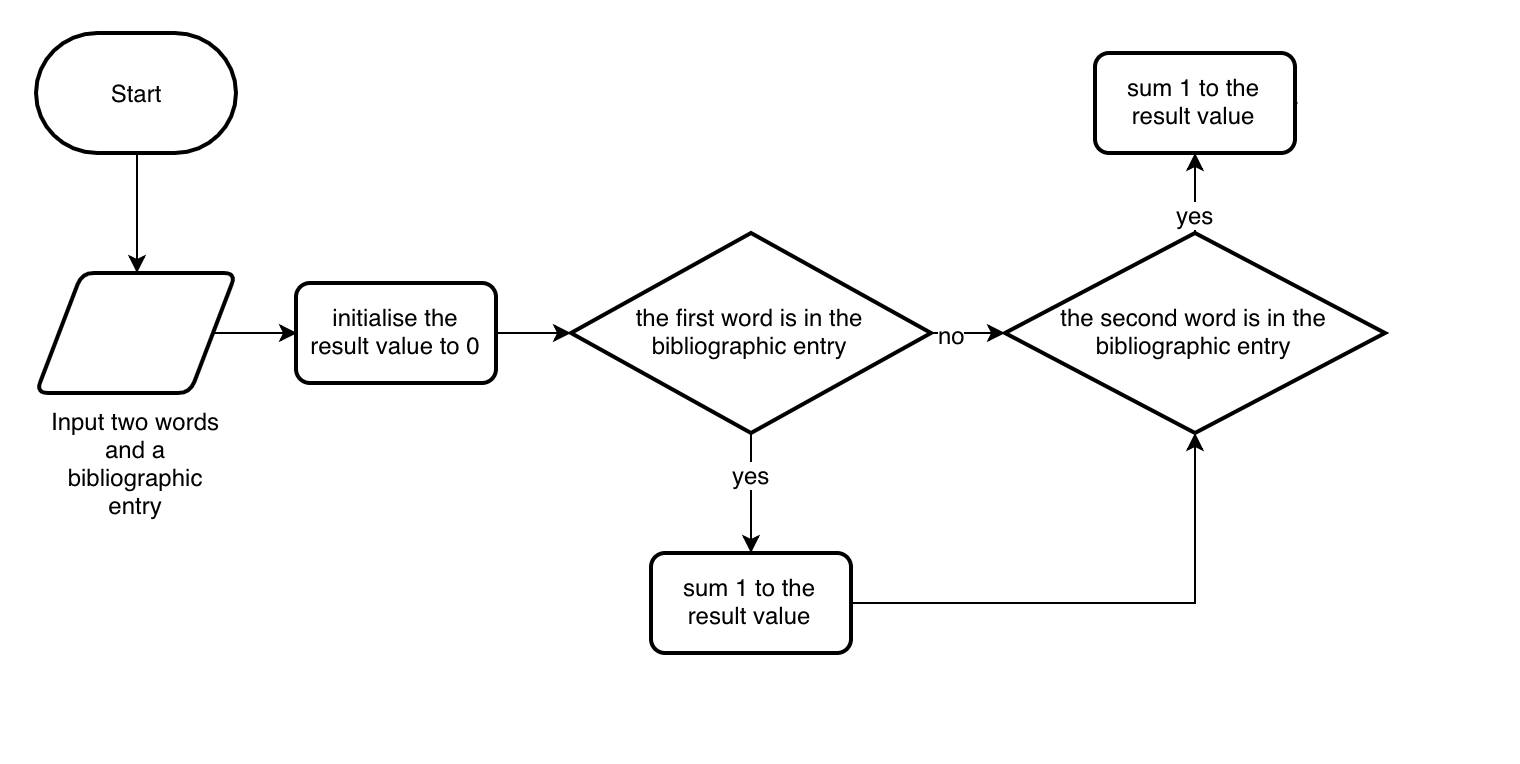
Final algorithm: flowchart

Final algorithm: flowchart

How to create flowcharts
Old-fashioned method: use a piece of paper plus either a pencil or pen - it works, I swear
Modern method: there exists also online tools that allow you to create a flowchart by using an (electronic) computer - e.g. the one that has been used to create all the diagrams in this lecture is called Draw.io, which is a free-to-use Web application with a nice graphical user interface